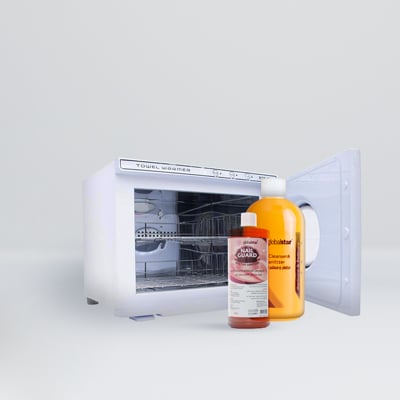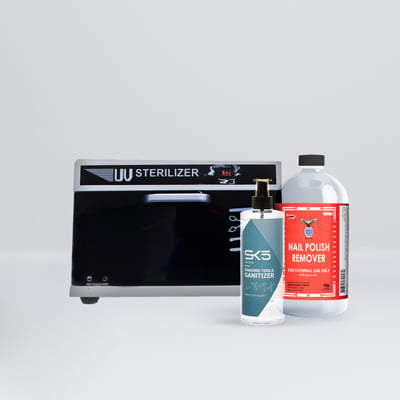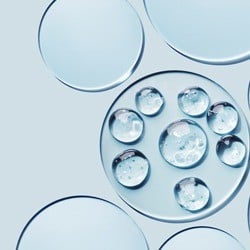Sterilization It is the procedure by which germs are eliminated or completely eliminated. It is considered a preventive and therapeutic step at the same time. If germs are present, sterilization materials kill them. Sometimes you may think that the tools are already clean and there is no need to sterilize them, especially if they are personal tools that only one person uses, thinking that germs and bacteria collect. Only when there are multiple users, but this is a common misconception. Bacteria develop on surfaces in several ways, including leaving tools exposed to dust and moisture for long periods of time.
Sterilization is considered an essential factor in preventing the spread of diseases and reducing the transmission of infection. It plays a decisive role in preserving our health and safety and protecting us from the harmful effects of infection such as boils and painful pimples, especially if the skin is exposed to a wound that is exposed to severe bacteria stuck on the tools.
Germs are everywhere around us, and shared surfaces, tools, appliances, and shared products such as makeup, beauty brushes, and facial towels are one of the most common means of transmission. Therefore, sterilization becomes necessary to prevent individuals and society from diseases.
In the salon or at home, all tools used by barbers and individuals must be properly sterilized so as not to transmit diseases from one person to another. In this article, we will mention the most important and most effective sterilization methods
The most important and distinctive of them are ultraviolet sterilization devices.
Negligence is a grave mistake that can not only be committed in salons, but it is also possible for a person to harm himself unintentionally. Sterilizing all tools causes many skin and non-skin diseases, such as alopecia, which is a skin disease that causes hair to fall out and not grow again, as well as scabies, allergies, and other skin diseases. Negligence in sterilization also leads to the transmission of other serious diseases that may lead to AIDS.
We all bear the responsibility of sterilizing and creating a clean environment at home and salon for ourselves and our clients. Such an environment creates a strong bond of trust and security.
- Benefits of sterilization
- Methods of sterilizing tools
Benefits of sterilization
After mentioning the need for sterilization and the danger of bacteria on the skin, the benefits of sterilization become self-evident
1. Preventing the spread of infection: Sterilization is an effective way to limit the transmission of infection between wounds and the resulting disfigurement such as pimples, skin damage, and resulting scars. Regular sterilization of surfaces and tools of all kinds greatly reduces the chances of transmission of infection.
2. Prevention of infectious diseases: Sterilization helps prevent many infectious diseases that can be serious or even fatal. This is not an exaggeration in the value of sterilization. Rather, makeup and nail clipping tools come close to sensitive places such as the lips and wounds around the nails, thus exposing your health to bacteria. Serious. By removing germs and viruses on surfaces and products, the chances of contracting diseases can be reduced and the spread in the community can be reduced.
3. Promoting general health: The previously mentioned benefits lead to the most important result, which is enhancing the general health of the body and immunity. It also gives a feeling of safety when using shared products or in salons. Good sterilization is the responsibility of all individuals to maintain cleanliness and prevent disease.

Methods of sterilizing tools
It is important to ensure that the tools are sterilized before each use to ensure that they are clean and that the skin is not exposed to any type of bacteria that the tools may have picked up from the air.
1. Use of chemical disinfectants: A variety of chemicals are used, such as alcohol, chlorine, or even nail polish remover or “acetone.” It is also a rapidly evaporating alcoholic solution that contributes to sterilization and cleaning to sterilize surfaces and tools. These products are useful in sterilizing metal or plastic tools by applying cotton to the tools to be sterilized.
2. Ultraviolet sterilization : Ultraviolet rays (UV-C) are used to sterilize air and surfaces and eliminate bacteria and viruses through the use of ultraviolet sterilization devices. They are particularly useful in sterilizing products that cannot be cleaned using liquid sterilization products such as Face towels. Make-up, makeup tools and brushes.
Ultraviolet sterilizers have many benefits and advantages
The devices are designed to maintain health and safety - and are a great choice for both salons and individuals at home who use multi-use tools. They can also sterilize hair scissors, nail care supplies like nail brushes and beauty tools like tweezers that need quick sterilization between uses.
Sterilizers like these cut cleaning time in half and help you when using them at home.
It creates a safe and clean environment inside the salon, home and spa
3. Expose fabrics to direct sun. The sun is considered a powerful sterilizer and killer of bacteria. Fabrics and metal tools can also be boiled in hot water to kill bacteria. As for plastic and brushes, just as high heat is a strong killer, high cold is also a strong killer. Exposing tools to freezing temperatures, such as placing them in the freezer, can help kill bacteria.


